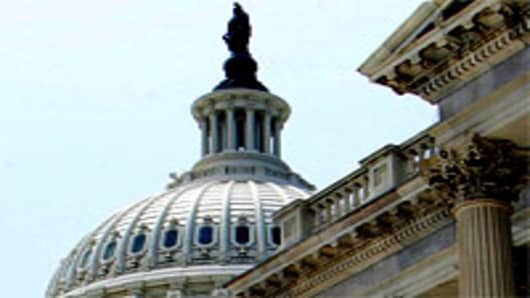The White House would eliminate requirements for trapping polluting vapors at gasoline stations and let employers and hospitals file fewer reports as part of a plan it is announcing Thursday to ease regulatory burdens on business.
More than four months after President Barack Obama ordered agencies to weed out rules that stifle economic growth, the administration was releasing some details of its proposals. Overall, it was unveiling hundreds of regulatory changes that could save businesses billions of dollars and tens of millions of hours of work, the White House said in a written statement.
The proposals would help reduce costs for companies and state and local governments while "maintaining the critical health and safety protections that Americans deserve," the statement said. Cass Sunstein, the White House regulatory chief, planned to describe the changes later Thursday morning in remarks to the conservative American Enterprise Institute.
Obama issued an executive order in January requiring agencies to hunt for regulations that are outdated or could cost jobs. It came with the country mired in recession and just as Republicans took over the House, pledging to shrink government and kill regulatory burdens that hinder businesses from operating efficiently.
It also came as the president began trying to improve his relationship with the business world, with whom he spent much of 2009 in clashes over revamping the nation's health care system and the government's oversight of financial markets. With the 2012 elections approaching, Obama must walk a fine line between satisfying his liberal Democratic base and not allowing Republicans to portray him as defending regulations that hurt job creation.
Congressional Democrats have accused Republicans of ignoring the health and environmental benefits that many regulations provide.
The White House initially provided few details about the scope of its proposal. On Wednesday, consumer and business lobbyists said they were uncertain about how far the administration plan would go and whether it would focus on specific rules or simply create a process for identifying regulations to be erased or altered.
The White House said examples of proposed regulatory changes include:
—The Environmental Protection Agency will eliminate requirements in some states for vapor recovery systems at gas stations, which are "redundant" because of improved air pollution controls in vehicles, saving $67 million annually.
—The Health and Human Services Department will consider easing the amount of information doctors and hospitals must file to medical databases.
—The Occupational Safety and Health Administration will reduce over 1.9 million hours a year of reporting requirements for employers, saving over $40 million. And the agency will also make hazard labels on some products match labels used by other countries for an annual saving of $585 million.
—The Transportation Department would apply certain railroad safety equipment rules "only where they are actually needed," saving up to $1 billion over 20 years.
The government would streamline the Commerce and State departments' regulatory requirements for exports and for the Interior Department's process for listing species as endangered.
Most proposals announced Thursday are not final and will be updated to reflect public comment, the White House said. That process is expected to last into the summer, said lobbyists who had been told about the plan.


